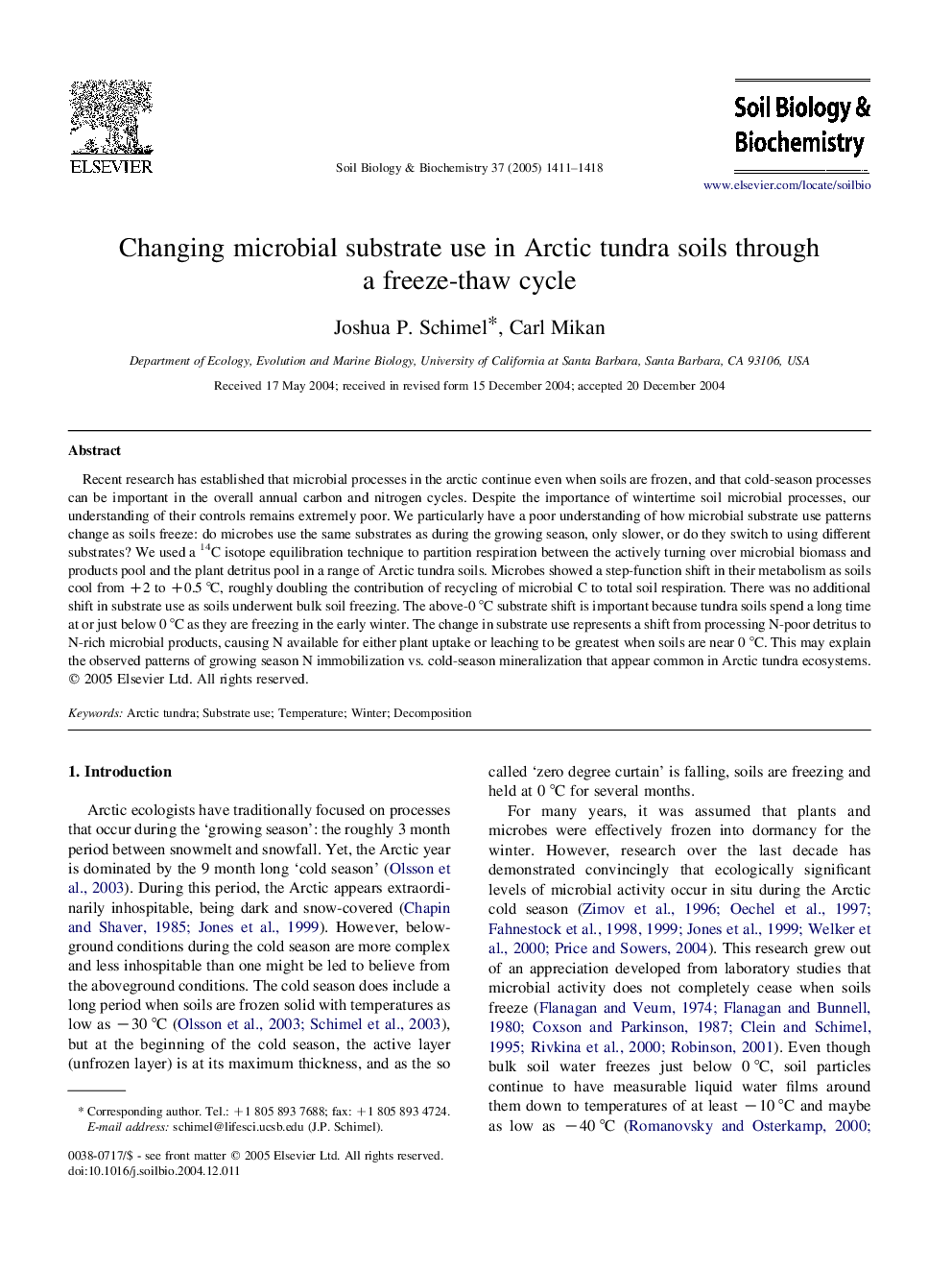| Article ID | Journal | Published Year | Pages | File Type |
|---|---|---|---|---|
| 10846209 | Soil Biology and Biochemistry | 2005 | 8 Pages |
Abstract
Recent research has established that microbial processes in the arctic continue even when soils are frozen, and that cold-season processes can be important in the overall annual carbon and nitrogen cycles. Despite the importance of wintertime soil microbial processes, our understanding of their controls remains extremely poor. We particularly have a poor understanding of how microbial substrate use patterns change as soils freeze: do microbes use the same substrates as during the growing season, only slower, or do they switch to using different substrates? We used a 14C isotope equilibration technique to partition respiration between the actively turning over microbial biomass and products pool and the plant detritus pool in a range of Arctic tundra soils. Microbes showed a step-function shift in their metabolism as soils cool from +2 to +0.5 °C, roughly doubling the contribution of recycling of microbial C to total soil respiration. There was no additional shift in substrate use as soils underwent bulk soil freezing. The above-0 °C substrate shift is important because tundra soils spend a long time at or just below 0 °C as they are freezing in the early winter. The change in substrate use represents a shift from processing N-poor detritus to N-rich microbial products, causing N available for either plant uptake or leaching to be greatest when soils are near 0 °C. This may explain the observed patterns of growing season N immobilization vs. cold-season mineralization that appear common in Arctic tundra ecosystems.
Related Topics
Life Sciences
Agricultural and Biological Sciences
Soil Science
Authors
Joshua P. Schimel, Carl Mikan,
